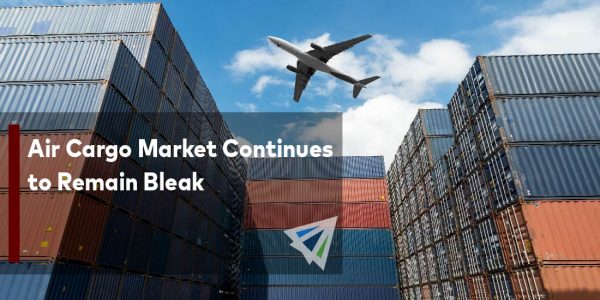Competitive Edge
December 14th, 2022
UPDATE: U.S. and Canada Ports – Number of Cargo Vessels at Anchor
• Vancouver: 30 Vessels at Anchor (-7)
• Savannah: 11 Vessels at Anchor (-9)
• Houston: 19 Vessels at Anchor (-11)
• San Francisco/Oakland: 8 Vessels at Anchor (-1)
• Los Angeles/Long Beach: 8 Vessels at Anchor (+2)
• Mobile: 4 Vessels at Anchor (-1)
• New York/Newark: 2 Vessels at Anchor (-4)
• Charleston: 1 Vessels at Anchor (-1)
Note: Count taken on December 13, 2022. This count does not include vessels moored and being unloaded at port docks. Colored numbers in parentheses represents the change from last week over. Data is courtesy of MarineTraffic’s live vessel traffic map.
Have another U.S. or Canadian port you’d like us to track weekly? Let us know!
Takeaways
• U.S. West Coast: What’s new? WC ports remain minimally congested. It’s just now that the Gulf and East coasts are catching up.
• U.S. Gulf Coast: Last week, Houston had 30 vessels queued off its shore–a byproduct of the port’s boost in export and import volume in October. This week, we saw 11 of those vessels eliminated from its backing as Houston steadily processes its welcomed surge of volumes the past few weeks.
• U.S. East Coast: The week-over-week change for EC ports is green like American money. Savannah reaps tremendous progress in removing a fair chunk from its long-held pileup.
• Canada: We can continue to blame Vancouver’s outstanding issue of berthing delays for its endless sway of congestion.
IMPORT: Asia to North America (TPEB)
Recent Developments:
• West Coast contract negotiations between the International Longshore and Warehouse Union (ILWU) and Pacific Maritime Association (PMA) remain active. The existing labor contract between the two parties expired July 1.
• Rail congestion is considerable at most ports, including inland hubs.
Rates: Spot rates are flirting at pre-pandemic levels thanks to waning demand. Transpacific service contracts of some shippers have been renegotiated to adjust with these market changes and deter shippers from opting for more favorable spot rates.
Space: Space is open.
Capacity: Capacity is very much open for transpacific trade. Carriers are struggling to match capacities with plummeting demand. Carrier’s overcapacity has spurred on blank sailings. More blank sailings are expected in 2023.
Equipment: Lower volumes have brought relief to equipment deficits. Chassis supply looks to rebound in the new year.
TIPS:
• Book at least two weeks prior to the ready date.
• For cargo ready now, take advantage of open space and softened rates on the spot market.
• Blank sailings will continue being in play for the foreseeable future.
IMPORT: Europe to North America (TAWB)
Recent Developments:
• UPDATE: A new labor contract has finally been reached between dockworkers and port employers at Britain’s largest port, Felixstowe. The deal is great news for U.K. trade as the port’s operations have been tormented with highly publicized strikes throughout the last few months.
• An easing market for this trade has afforded U.S. ports an opportunity to improve on their congestion and wait times.
Rates: Rates have fallen in December thanks to lower demand and carriers adjusting typical PSS fees. We believe this trend will hold over into the new year.
Space: Space to both U.S. coasts have opened up as American port congestion overall eases.
Capacity: Larger vessels have entered the market, including Evergreen’s Tampa Triumph (14,000 TEU capacity), boosting the trade lane’s capacity.
Equipment: The seemingly endless equipment crunch at European ports and inland hubs has improved in pockets.
TIPS:
• Book at least four weeks prior to ready date.
• Strongly consider premium services for no-roll options and improved reliability of cargo.
EXPORT: North America to Asia
Rates: Rates are stable. They have not been as susceptible to plummeting in this marker like its inbound counterpart (Asia to North America).
Capacity: Capacity remains stable. While blank sailings won’t be as common as they are on inbound lanes, please stay informed on the potential for them to still occur.
Equipment: Chassis and container deficits still exist at inland hubs, like Kansas City and Memphis, but buy in large, most dry and coastal ports have balanced out their equipment availability.
TIPS:
• Book at least three weeks prior to the time of departure.
• Stay in close communication with your provider and carrier to secure necessary equipment.
InterlogUSA Proudly Presents...

Offering insights into breaking news, market trends, our company’s history, and more.
“FreightFM” features short-form video interviews with InterlogUSA’s industry experts.
Did You Know: Truckers in South Korea Vote to End Strike
Thousands of truckers voted to return to work late last week – stopping a 16 day work stoppage, it’s second stoppage in 6 months.
We have been following and discussing this topic in our Interlog Insights newsletter this month. On Friday this week, our newsletter will have more information on the details of the return to work, as well as what this means for the South Korean Truckers going forward.
You can sign up here if you are interested in hearing more!
Freight News
Costco is getting out of the ship chartering business
Major U.S. retailer, Costco, is getting out of the ship chartering business. By doing so, Costco will have to take a $93 million charge against earnings for paying charter rates at the peak of shipping demand.
This comes a little over a year after they first announced in September 2021 that they were going to charter some ships as well as leasing “several thousand containers” because of the supply chain congestion that was occurring – per the Journal of Commerce.
As many remember, there were many uncertainties regarding the supply chain congestion throughout the last couple of years. With many wondering when a “new normal” would begin.
This latest news of Costco getting out of the ship chartering business could be seen as something optimistic, as one of the main reasons Costco did get into the ship chartering business was to “increase the ability for more timely shipping and arrival of overseas merchandise” Costco CFO said in an earnings call last Thursday.
Costco is not the only one who chartered container and breakbulk ships – Walmart, Home Depot, and IKEA have all been doing similar things.
Updates on Air Cargo Demand as it faces uncertainties
Air cargo volumes continued to drop in November, marking its ninth straight month. In a typical season for air cargo, now is normally the busiest time of the year for cargo airlines and air logistics providers.
With uncertainty looming, many in the industry are protecting themselves from the uncertainty by signing less long-term commitments, as pricing for long-term contracts remains higher compared to the spot market – Freightwaves reports.
Additionally, while ocean shipping rates have been significantly dropping back close to pre-pandemic level rates (on the key Asia-to-U.S. West Coast lane), air cargo prices have declined more slowly. This tells us that many are choosing to ship via ocean again vs air.
This is expected to continue into the new year as we wait and see what economic factors are at play in 2023.
Missed Last Month's Webinar? Watch Here Now!
Sign Up for This Month's Webinar
Our next webinar will be on Wednesday, December 21st – Time: TBD
Our special guest speaker for this upcoming webinar is our Taiwan partner, Anthony Wong with Sapphire Logistics!
Finally, we would like to hear from you!
If you have any questions or topics you would like our experts
to discuss in future webinars, please let us know!
You can email us at sales@interlogusa.com
Interlog  Insights
Insights
In last week’s newsletter, we gave more details on our predictions for this month.
Additionally, we discussed the Chinese New Year timeline in greater detail, updates on the South Korea Trucker Strike.
Plus details on where the relationship between the rail unions and railroads go from here.
Sign up for the latest insights today!
Sign up for our
industry answers
Our team works to provide valuable, unique, and relevant content to assist you in finding solutions. Sign up now.

